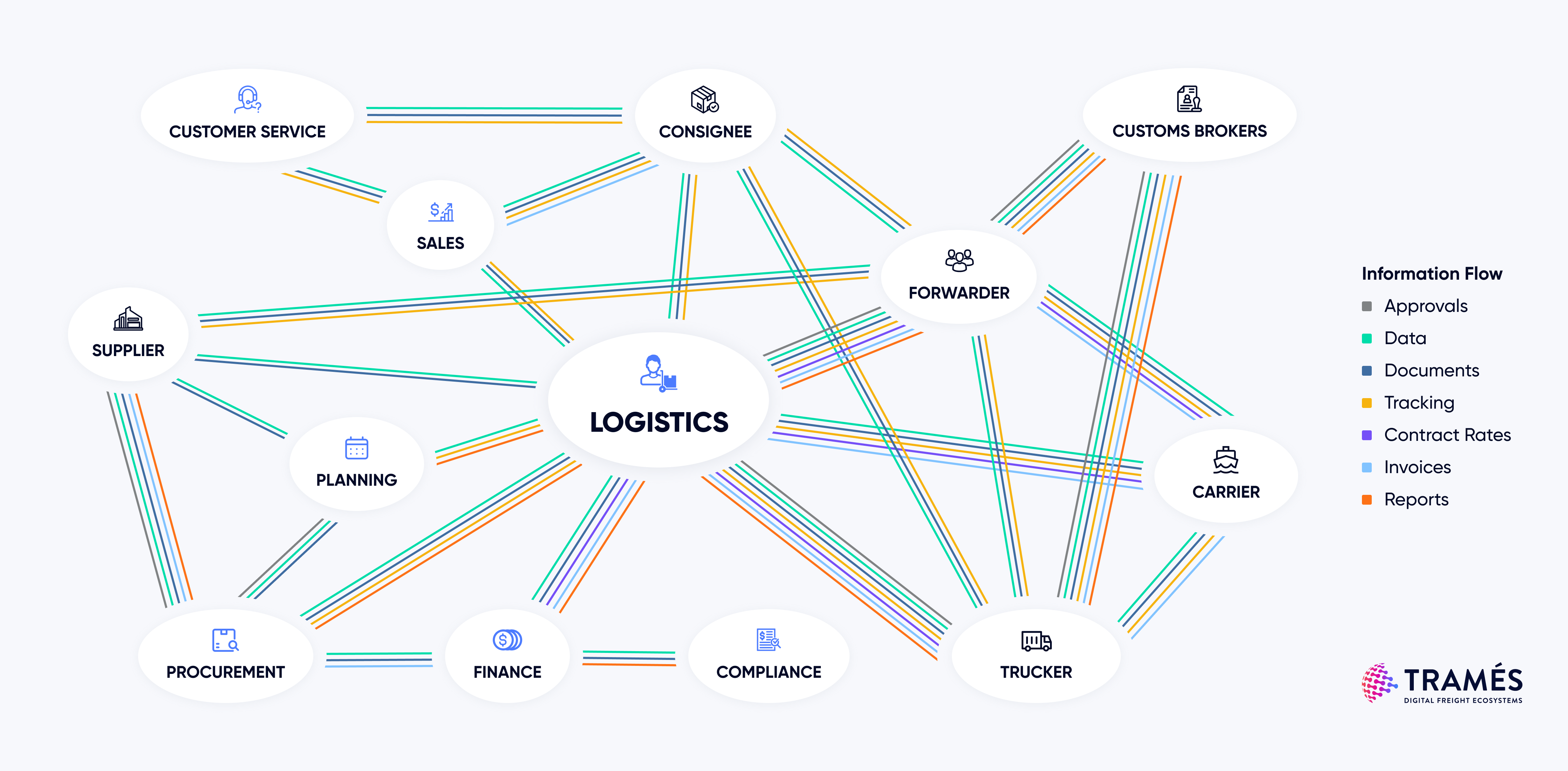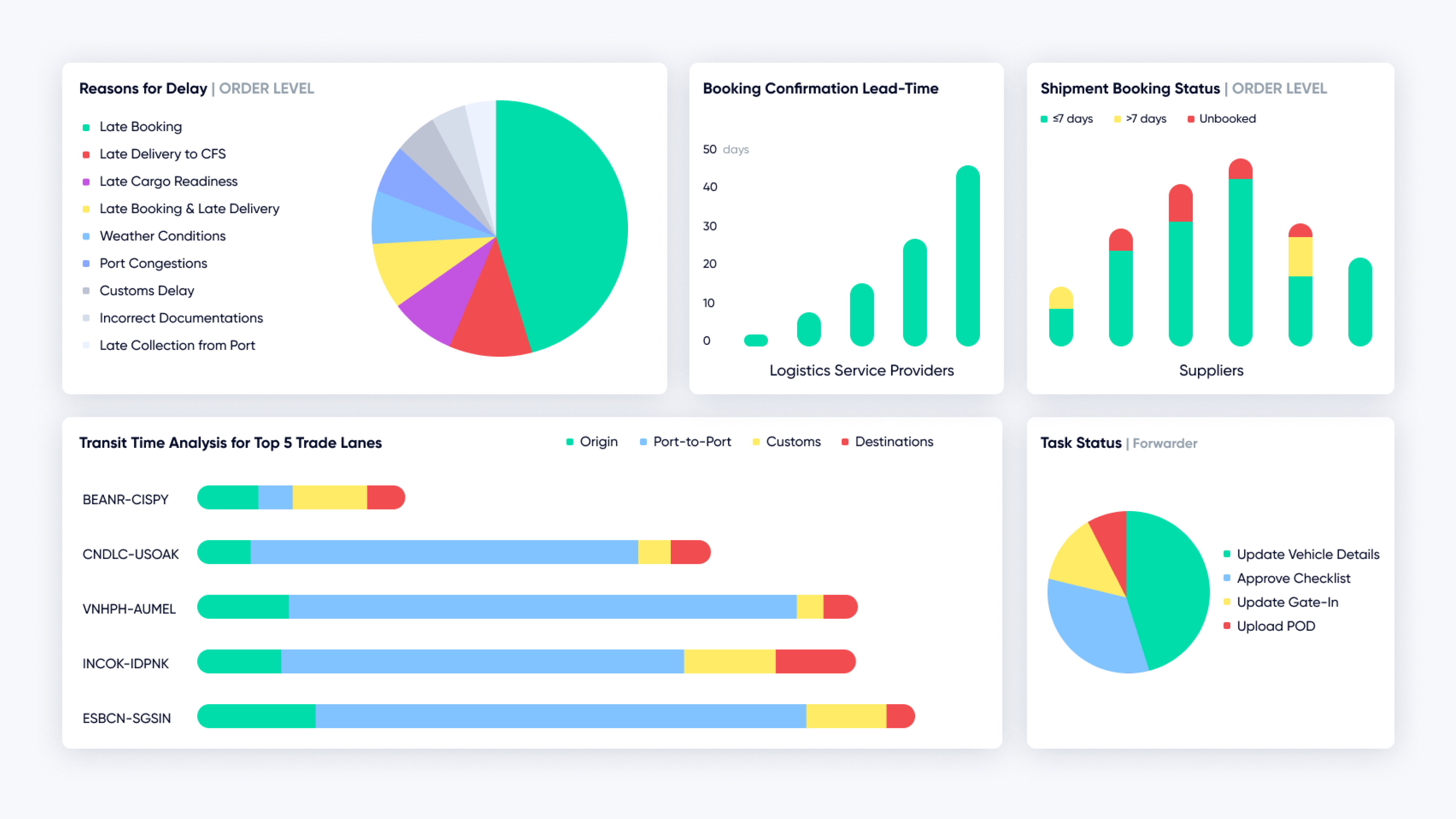Insights
Logistics operations involve a multitude of stakeholders, processes, and tasks that need to be coordinated and executed efficiently to ensure timely and accurate delivery of goods. This necessitates a significant amount of frequent and timely communication among the involved parties to successfully transport the shipment. This can entail laborious manual tasks such as tracking the shipment's progress on carrier websites, verifying and passing along information to other stakeholders, and adhering to numerous SLAs that govern each stage of the process.
In 2018, IBM reported that transporting a single shipment of goods requires more than 200 unique interactions involving 30 individuals and organisations, and resulting in inches worth of documentation. In some cases, the administrative cost may surpass the shipping expense. Eliminating such inefficiencies means businesses would run smarter and experts believe that global trade volumes could increase by 15 percent.

To manage these complexities, many supply chains are turning to technologies that provide real-time tracking and visibility of shipments, enabling all stakeholders to have access to the same information and reducing the need for manual communication and tracking. Furthermore, a comprehensive shipment management platform can make a big difference in streamlining many of the processes related to managing shipments. But with so many options out there, it can be overwhelming to determine which platform offers the capabilities needed to support logisticians and their network of partners. Here are 12 essential capabilities to consider when choosing a workflow management platform:
- Digital SOPs
Your platform should allow you to build digital workflows that can be easily shared with and updated by your external stakeholders. Clear assignment of tasks and task details should be included.
Note: It's important to have a configurable solution to align with your existing process rather than changing your process to accommodate the solution.
- Flexible Updating Options
A good shipment management platform should offer various ways of updating your shipment data or documents, such as direct user input on the platform, batch uploads, or integration with other systems. This flexibility ensures that you can easily update and synchronise your shipment data across different sources, according to each user’s preference.
- Document Management
From bills of lading, customs documents to even photos of the cargo, your platform should allow you to attach and share all the necessary documents related to your shipments. It should allow you to effectively tag, organise, view and download as well.
- Automated Notifications
Instead of relying on countless emails and manual follow-ups, your platform should offer automated notifications for delays, updates, or sharing of any other relevant information as part of your workflow.
- Approvals
To ensure proper governance and compliance, your platform should allow for approvals to be done smartly as per your existing processes. This will allow you to monitor inefficiencies in your operations.
- Digital Contract Rates
Your platform should allow you to manage the various contract rates that you have with your carriers and other service providers, and smartly apply them to each shipment.
- Spend Management
By enabling freight spend to be updated as part of the workflow, you can have real-time updates of your overall spend. This information is vital for automated freight audit and identifying opportunities for optimisation or consolidation.
- Shipment Tracking
When your freight forwarder provides you with the shipment tracking details on the platform, the platform should generate real-time tracking with the option to set alerts and receive updates on any changes.
- Access Controls
Depending on your business requirement, you may want to grant different levels of document or data accessibility to the stakeholders working on the shipment. This is to avoid the sharing of sensitive information such as freight spend or invoice.
- Excel Compatibility
Your platform should allow you to easily download or upload all of data (available in the platform) in Excel format, so that you do not need to maintain separate spreadsheets.
- Reminders
Some processes may take place out of the platform, such as payments to customs. By having the flexibility to include this as a reminder in your digital workflow, you can ensure that this step is never missed.
- Analytics & Reporting
Finally, your platform should provide automated analytics and reporting, such as charts and dashboards, to help you visualise and analyse the large amount of shipment data depending on your area of concern or focus, whether that be booking visibility, root cause analysis (RCA), or other relevant metrics.

Read: Cotton On Drives Actionable Improvements by Digitalising Upstream Root Cause Analysis
Overall, implementing a dedicated workflow management tool for logistics can alleviate the complexities involved in managing shipments by automating processes, reducing manual effort, and providing real-time insights into critical performance indicators. These benefits ultimately translate into improved efficiency, higher customer satisfaction, and a competitive edge in the fast-paced and intricate logistics industry. In summary, the advantages of such a technology include:

Automation reduces manual effort, minimise errors, streamline tasks, and optimises resource utilisation. This leads to increased efficiency in managing logistics operations and speeds up order fulfilment and lead times.

Automated data capture, analysis, and reporting can provide real-time insights into key performance indicators, such as order status, inventory levels, transportation costs, and delivery performance. This enhanced visibility and transparency empower logisticians to make data-driven decisions and proactively address issues or bottlenecks in the logistics process.

Automating repetitive and time-consuming tasks leads to reduced labour and operational costs. Having real-time access to end-to-end data enables logisticians to make informed decisions about optimising transportation routes, warehouse space, carrier selection, and other aspects of logistics operations, leading to cost savings and improved customer service.

Automation allows large volumes of data and transactions to be handled effortlessly, allowing logisticians to expand their logistics operations without significant increases in overhead costs or operational complexities. Digital workflow orchestration also ensures that new joiners do not overlook any essential processes required.

Digital workflow orchestration and automation can help to facilitate the audit process by ensuring compliance with regulations and mitigate risks by reducing human errors, ensuring consistency, and providing audit trails for traceability and accountability.
This article is brought to you by Tramés, a comprehensive logistics management solution designed to give shippers complete control and visibility over their freight transport operations. Our agnostic platform digitises and streamlines logistics processes by integrating fragmented data, legacy systems, and a diverse network of partners for a highly efficient supply chain. Book a demo to learn more.



















